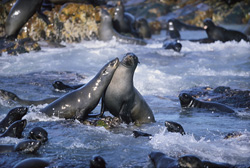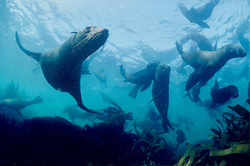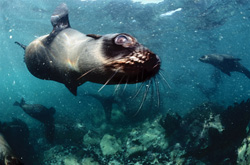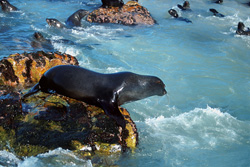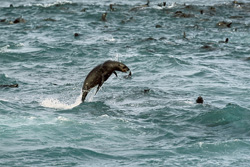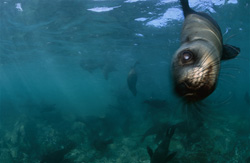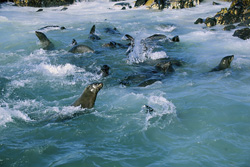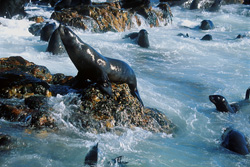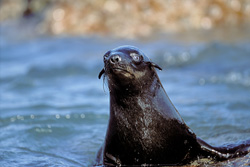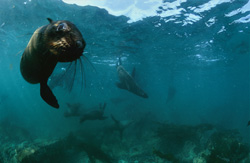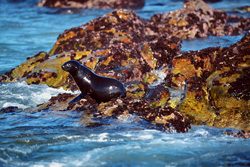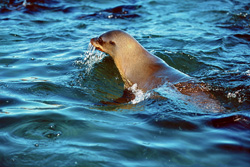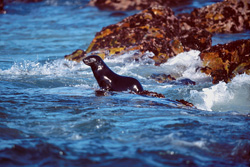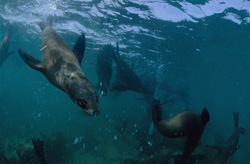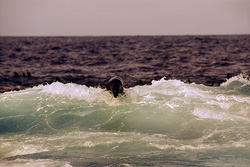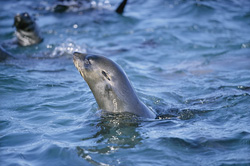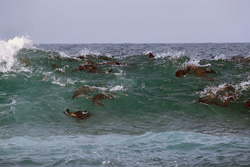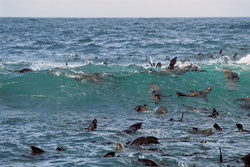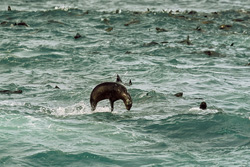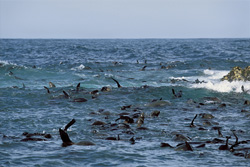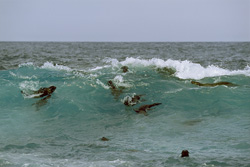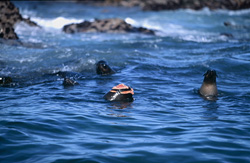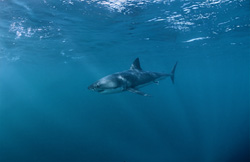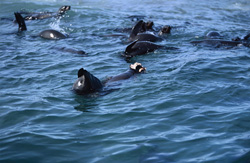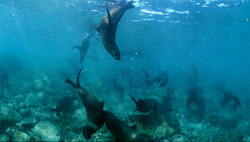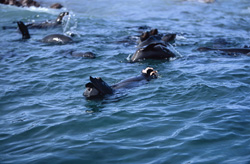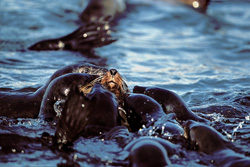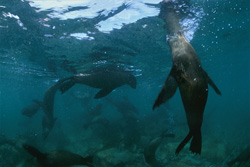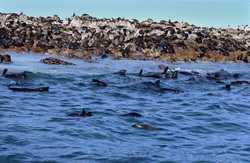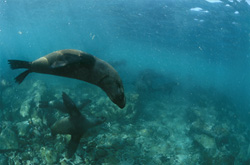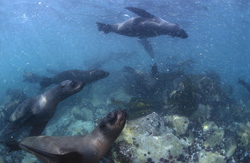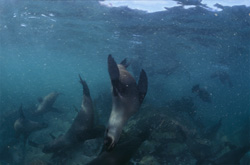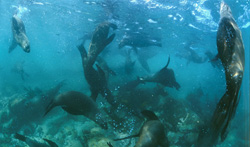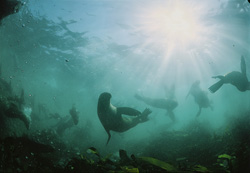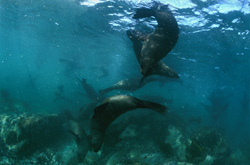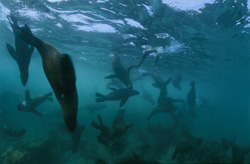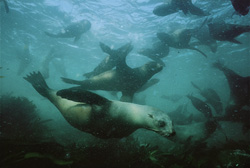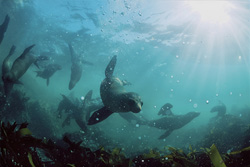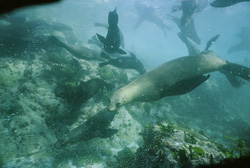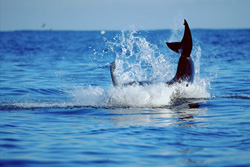Explore the Fascinating World of the South African Fur Seal on Geyser Rock
The South African Fur Seals (Arctocephalus pusillus) are captivating marine mammals that form a significant colony on the rocky island of Geyser Rock near Dyer Island. With a population of approximately 60,000 individuals, they play a crucial role in the region's marine ecosystem. Known for their impressive diving capabilities, these seals can reach depths of up to 50 meters and remain submerged for up to five minutes. Their primary diet consists of reef fishes, squid, and lobster, which they hunt both in shallow waters and the open sea. The breeding habits of fur seals are closely linked to tidal patterns and available food resources, making them vital indicators of the marine ecosystem's health. However, they are severely threatened by human impacts such as pollution and bycatch. Protecting these animals is essential to maintaining ecological balance in their habitats. Near Geyser Rock, the fur seals must navigate a dangerous zone frequented by Great White Sharks when they embark on their fishing excursions into the open ocean. This interaction between fur seals and sharks is a fascinating example of predator-prey dynamics in nature. The seals are well-adapted to the cold climate, thanks to their thick fur layers, providing them with protection from the elements and efficient heat retention. Their social structure, characterized by complex communication behaviors and social bonds, offers numerous research opportunities for scientists worldwide. Observing them provides insights into marine mammal behavior and contributes to a better understanding of marine biology.

